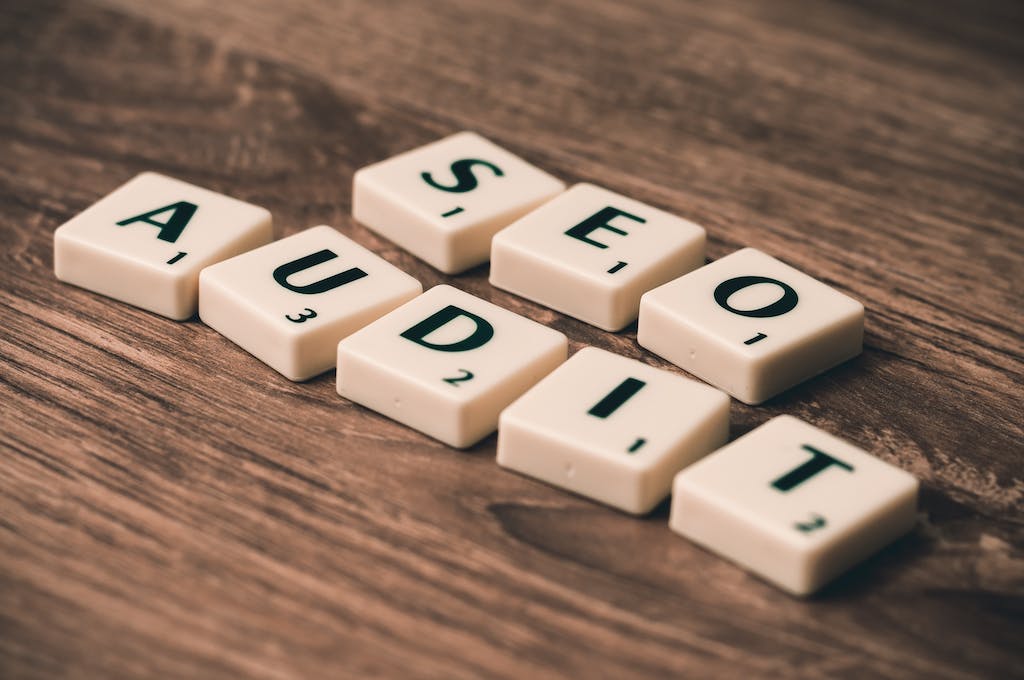Digital Marketing Types
Digital marketing encompasses various online strategies and tactics to promote a business, build engagement with potential customers, and generate sales. As consumers spend more time online, digital marketing becomes increasingly vital for modern businesses. This article will provide an overview of the major types of digital marketing.
Digital marketing leverages the internet, mobile devices, social media, and other digital platforms to reach and interact with target audiences. It includes search engine optimization, pay-per-click ads, social media marketing, content marketing, email marketing, and affiliate marketing. Digital marketing provides detailed metrics and analytics to measure results. It is also more cost-effective and scalable than traditional marketing.
Growth and Importance of Digital Marketing in Marketing Mix
The landscape of digital marketing has expanded significantly, becoming a vital part of the marketing mix. Its significance lies in the ability to reach a wider audience in a targeted and cost-effective way compared to traditional methods. Digital marketing offers measurable results, enabling businesses to adjust strategies in real-time to achieve optimal outcomes.
Benefits of Digital Marketing Over Traditional Marketing
Digital marketing provides several advantages over traditional marketing, including increased opportunities for engagement, higher conversion rates, and more accurate targeting. It equips businesses with the tools to reach specific demographics, track the customer journey, and gain insights into consumer behavior.
To explain this better, watch my video:
Search Engine Optimization (SEO)
Search Engine Optimization (SEO) is the practice of increasing the quantity and quality of traffic to your website through organic search engine results. It involves optimizing your online content so that a search engine likes to show it as a top result for searches of a certain keyword.
Major Components of SEO
Keyword Research
Keyword research is the foundation of SEO. It involves identifying the terms and phrases that potential customers use to search for products or services online. Understanding these keywords allows businesses to tailor their content to meet the needs and search habits of their target audience, improving visibility and relevance.
On-Page Optimization
On-page optimization involves ensuring the content on a website is relevant and provides a great user experience. This includes optimizing title tags, meta descriptions, headers, and images. Proper on-page SEO helps search engines understand the content of a page and how it relates to users’ search queries.
Content Creation
Content creation is about producing high-quality, relevant content that addresses the needs and interests of your target audience. Effective content not only ranks well in search engines but also engages and retains visitors. This component is crucial for building authority and trust with both users and search engines.
Backlink Building (Off-Page SEO)
Backlink building, a key aspect of off-page SEO, involves getting other reputable websites to link back to your site. Backlinks are a major ranking factor for search engines, as they signal the credibility and authority of your website. A strong backlink profile can significantly improve your site’s visibility and ranking.
Local SEO
Local SEO optimizes your online presence to attract more business from relevant local searches. This includes optimizing your Google My Business listing, local citations, and location-specific keywords. Effective local SEO ensures your business appears in local search results, making it easier for nearby customers to find you.
Technical SEO
Technical SEO focuses on improving the technical aspects of your website to enhance its ranking in search engines. This includes site speed optimization, mobile-friendliness, indexing, crawlability, and site architecture. Technical SEO ensures that search engines can easily access, crawl, and index your website without any issues.
Analytics and Reporting
Analytics and reporting involve tracking the performance of your SEO efforts and making data-driven decisions. Using tools like Google Analytics and Google Search Console, businesses can monitor traffic, rankings, and conversions. This component is vital for understanding the effectiveness of your SEO strategy and identifying areas for improvement.

Pay-Per-Click (PPC) Advertising
Pay-Per-Click (PPC) is an online advertising model where advertisers pay a fee each time one of their ads is clicked, directing users to their website or landing page.
Major Components of PPC
Keyword Research
Identifying and selecting relevant keywords to bid on, ensuring ads appear in the search results of targeted audiences, optimizing for cost and effectiveness.
Ad Creation
Designing compelling ads that resonate with the target audience, including headlines, descriptions, and calls-to-action (CTAs), to maximize click-through rates.
Landing Page Development
Creating optimized landing pages that align with ad messages, offering clear, relevant content and a straightforward path to conversion.
Bid Management
Adjusting bids for keywords based on performance metrics like click-through rates (CTR) and conversion rates to maximize return on investment (ROI).
Quality Score Optimization
Improving the quality score, which affects ad placement and cost, by enhancing the relevance of keywords, ads, and landing pages to the user’s search query.
Campaign Management
Regularly monitoring and adjusting campaigns based on performance data, market trends, and business goals to continually improve results.
Analytics and Reporting
Using analytics to track and report on key performance indicators (KPIs) like impressions, clicks, CTR, and conversions, informing future PPC strategies.

Social Media Marketing
Social Media Marketing involves promoting products or services through social media platforms to engage with existing customers and reach new audiences, enhancing brand visibility and driving sales.
Major Components of Social Media Marketing
Strategy Development
Creating a comprehensive plan that outlines goals, target audiences, platform selection, and content themes, ensuring all social media efforts align with broader marketing objectives.
Content Creation
Producing engaging, platform-specific content that resonates with the audience, including images, videos, and written posts, to foster engagement and brand loyalty.
Community Management
Actively managing the brand’s social media presence by responding to comments, messages, and reviews, building relationships with followers and creating a positive brand image.
Advertising
Utilizing paid advertising options on social media platforms to reach a wider or more targeted audience, optimizing for specific objectives like brand awareness or conversions.
Analytics and Reporting
Monitoring and analyzing performance data to understand the impact of social media activities, using insights to refine strategies and improve future campaigns.
Influencer Collaboration
Partnering with influencers to tap into their audiences, leveraging their credibility and reach to promote the brand in an authentic and engaging way.
Listening and Engagement
Tracking brand mentions and industry conversations to gain insights into audience sentiment, identify trends, and engage in relevant discussions, enhancing brand presence.

Content Marketing
Content Marketing involves creating and sharing valuable, relevant, and consistent content to attract and retain a clearly defined audience, ultimately driving profitable customer action.
Major Components of Content Marketing
Content Strategy
Developing a strategic approach that defines your goals, audience needs, content themes, and distribution channels to ensure all content efforts support business objectives.
Content Creation
Producing high-quality, engaging content tailored to the audience’s interests and needs, including blog posts, videos, infographics, and podcasts, to build brand authority and trust.
Content Distribution
Sharing content across various platforms and channels, such as social media, email, and websites, to maximize reach and engagement with the target audience.
SEO Integration
Optimizing content with targeted keywords and SEO best practices to improve visibility in search engine results, driving organic traffic to your content.
Audience Engagement
Encouraging interactions with your content through comments, shares, and feedback, fostering a community and deepening relationships with your audience.
Analytics and Measurement
Tracking content performance using analytics tools to assess metrics like views, shares, and conversion rates, informing future content strategies and adjustments.
Content Repurposing
Adapting and reusing existing content in new formats or for different platforms to extend its reach and lifespan, maximizing the investment in content creation.

Email Marketing
Email Marketing is a direct marketing strategy that involves sending emails to a list of subscribers to promote products, services, or content, aiming to cultivate relationships and encourage customer action.
Major Components of Email Marketing
List Building
Gathering a list of email addresses from people interested in your brand, ensuring recipients have opted in, to create a foundation for targeted and effective communication.
Segmentation
Dividing your email list into smaller groups based on criteria like demographics, behavior, or purchase history, to tailor messages more precisely and increase engagement.
Email Design
Crafting visually appealing and mobile-friendly email layouts that enhance readability and encourage interaction, using a mix of text, images, and calls-to-action.
Content Personalization
Customizing email content to address the recipient’s preferences, interests, or past interactions with the brand, making each communication feel personal and relevant.
Automation
Using automated email sequences triggered by specific actions or timelines, such as welcome emails or follow-ups, to efficiently engage subscribers at critical moments.
Testing and Optimization
Implementing A/B testing on elements like subject lines, content, and send times to identify what resonates best with your audience and optimize future campaigns.
Analytics and Reporting
Monitoring key performance indicators (KPIs) such as open rates, click-through rates, and conversion rates to evaluate the effectiveness of email campaigns and inform strategic decisions.
Email Marketing
Email Marketing is a form of direct digital marketing that uses email to promote products or services, engage with an audience, and drive sales or leads. It’s a powerful tool for building relationships with prospects, leads, customers, and past customers.
Major Components of Email Marketing
Email List Building
The process of collecting email addresses from people interested in your brand through sign-ups on your website, social media, or other channels, aiming to grow a base of subscribers to engage with.
Segmentation
Dividing your email list into smaller, more focused groups based on specific criteria such as demographics, purchase history, or engagement level, to send more personalized and relevant emails.
Email Campaign Design
Creating visually appealing and easy-to-read emails using a mix of compelling images, text, and calls-to-action (CTAs) that align with your brand and campaign goals, optimized for all devices.
Content Personalization
Tailoring the content of your emails to meet the interests and needs of the individual recipient, based on the data you have about them, to increase engagement and conversion rates.
Email Automation
Setting up automated email sequences for various purposes, such as welcome series, abandoned cart reminders, or re-engagement campaigns, to nurture leads and customers efficiently.
A/B Testing
Conducting tests by sending two variations of your email to a small percentage of your list to see which performs better in terms of opens, clicks, or conversions, and using that insight for future emails.
Analytics and Performance Tracking
Using email marketing software to track metrics such as open rates, click-through rates, conversion rates, and bounce rates, to measure the success of your email campaigns and identify areas for improvement.
Ready to Take On Digital Marketing?
This overview covers the major types of digital marketing that modern businesses utilize to connect with consumers and drive growth in the digital age. As technology progresses and consumer behavior continues shifting online, skillfully combining and optimizing these digital strategies will only become more vital. Businesses need to continually educate themselves on emerging digital marketing techniques and fine-tune their approaches to stand out.
People who master both the strategic and tactical elements of digital marketing will gain a significant competitive advantage. With thoughtful planning, testing, and analysis, companies can develop integrated digital marketing plans that engage audiences, improve visibility, and fuel increased conversions.
If you are considering a career in digital marketing, watch this explainer that I made:
Frequently Asked Questions About the Types of Digital Marketing
What is the importance of social media marketing?
Social media marketing is critical for establishing brand visibility and awareness among target consumers where they actively spend time interacting online. It facilitates direct engagement and conversations to nurture relationships.
How can PPC advertising help my business?
Pay-per-click platforms like Google Ads allow businesses to get their ads and offers in front of interested searchers at their exact moment of intent. Well-targeted PPC ads can be highly effective at driving qualified website traffic and conversions.
What principles guide effective content marketing?
Quality educational content that engages consumers by providing value, without overtly promoting products. Optimized for search engine discoverability and user experience to drive organic growth by building authority and traffic.
Why focus resources on search engine optimization?
Higher organic search rankings for relevant keywords beget increased site traffic and brand visibility. SEO improves discoverability so more consumers can find your business through intentional and unintentional queries.
How does email marketing personalize the consumer experience?
Segmenting subscribers based on attributes and interests then integrating dynamic merge tags facilitates customizing messaging and offers at an individual level. This better resonates than broad one-size-fits-all emails.

… [Trackback]
[…] Info on that Topic: shanehummus.com/digital-marketing/digital-marketing-types/ […]
… [Trackback]
[…] Information to that Topic: shanehummus.com/digital-marketing/digital-marketing-types/ […]
… [Trackback]
[…] Read More Info here to that Topic: shanehummus.com/digital-marketing/digital-marketing-types/ […]
… [Trackback]
[…] Info on that Topic: shanehummus.com/digital-marketing/digital-marketing-types/ […]